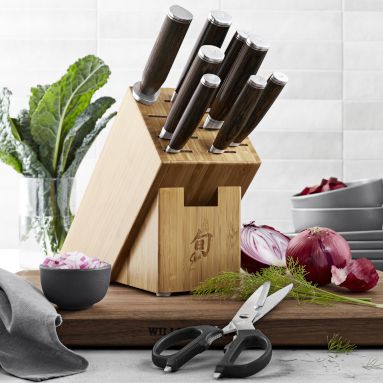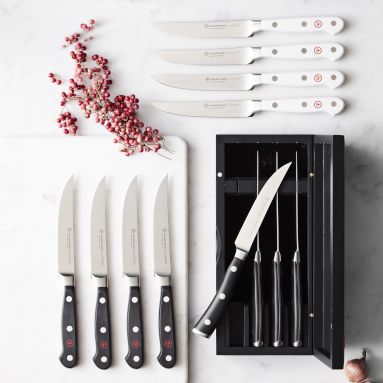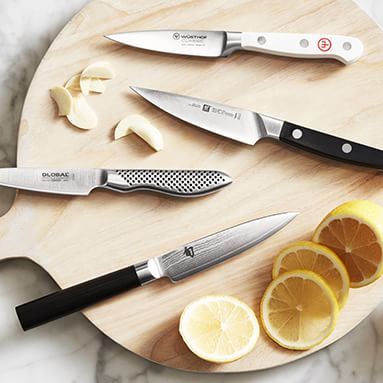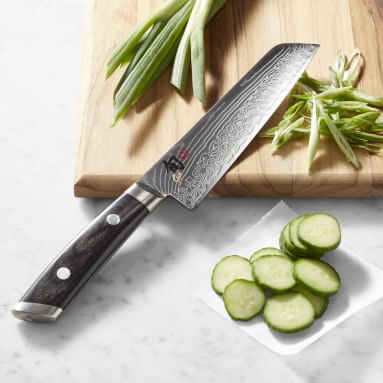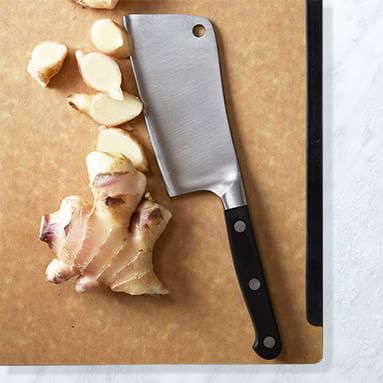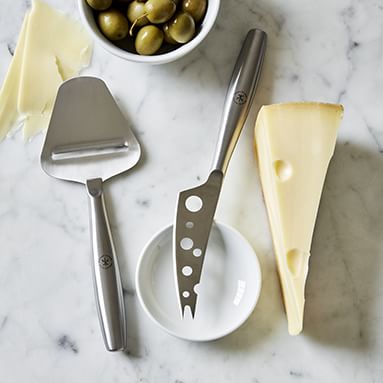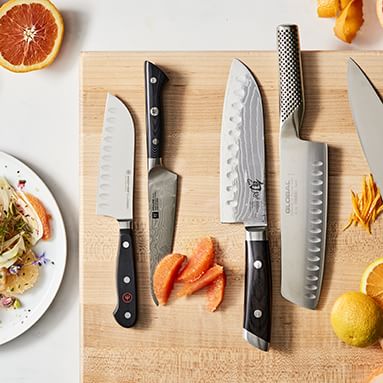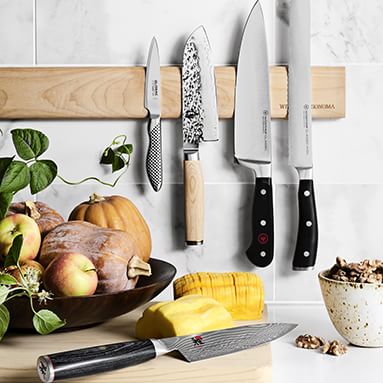Carving Knives & Slicers
Whether you’re carving up a Thanksgiving turkey in front of your guests or working behind the scenes in the kitchen to create translucent radish-slice rose petals, these knives are your ideal tools for cutting and slicing rather than chopping and cleaving. Peruse a variety of different knife types and some helpful accessories to make carving and slicing easier than ever.
Carving & Slicing Knife Characteristics
As with a boning knife and other specialty knife types, a slicing or carving knife has a particular shape and size that’s designed to facilitate a specific type of cut. When compared to a chef’s knife, for example, you can see that a slicing or carving knife is uniformly very thin, while a chef’s knife is more triangular in shape, tapering to its blade from a thicker top. A well-honed and sharpened chef’s knife can certainly carve a turkey or slice sushi-grade tuna, but its cuts won’t be as precise, and it might create some mess in the process. Slicing and carving knives are thin, straight and long, generally without dramatic curves. This helps the knife cut through large foods and allows the user to enjoy precise accuracy. Carving and slicing knives may also have hollow edges on their blades to help prevent slices from sticking to the knife, a feature that’s especially helpful when cutting moist foods.
Slicing vs. Carving Knife
Though they serve the same general purpose, there are some differences between slicing and carving knives. Slicing knives are usually shorter and smaller because they aren’t designed to power through large roasts or whole turkeys. This is also why carving knives tend to be a bit bulkier and sturdier. Slicers are designed more for precision, while carvers are designed more for strength and durability. This is why most ceramic knives are considered slicing knives. Ceramic is even sharper than steel, so it makes sense that a knife you’d use to cut paper-thin sashimi slices would be built both sharper and smaller for easier control.
Helpful Carving and Slicing Accessories
In addition to knives there are a variety of handy accessories that can making slicing and carving food much easier. You can buy a carving knife and fork pair to make carving hot foods much easier; the fork stabilizes while the knife cuts. At Williams Sonoma, we also offer a selection of cutting boards to facilitate better slicing or carving and easier cleanup. Even on a butcher block island or another counter surface that’s suitable for food prep, it’s usually a good idea to use a cutting board when carving cooked meats or slicing raw meat. Cleanup is much simpler when you can take the whole cutting board to the sink. Read our guide on how to clean a wooden cutting board to keep you board functional for many years.
Regardless of which specific foods you plan to slice or carve, these knives serve a distinct purpose that sets them apart from all others. Remember too that electric deli slicers can be a great solution for the versatile home kitchen. No matter how sharp and precise the knife, human error can be a factor in getting perfectly even, paper-thin slices of meats, fruits and vegetables. One solution is to hone your knife skills, but if you’d rather spend your time eating, an electric slicer can be the ideal companion. With so many great options to consider, there’s no doubt you’ll find the solution to your slicing and carving needs.

